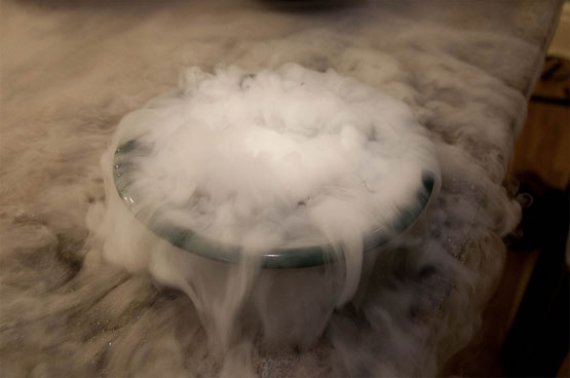Yesterday, Heusinkveld went to IJlst, one of the eleven cities, at the request of the news programme RTL Nieuws to demonstrate his experimental technique. Dry ice, which is usually used in laboratories, has a temperature of -80 degrees centigrade. When Heusinkveld placed a large bag of dry ice on the track of the Eleven Cities skating route, the ice underneath grew by 2 centimetres in an hour. Dry ice causes the ice track to cool down substantially to as little as 50 degrees below zero, which results in rapid growth of the ice at the bottom. The technique offers a solution for strengthening weak points on the route, for example under bridges. Heusinkveld, who is himself an enthusiastic skater, had more tips for the Frisian ice managers. For example, they could place frames in the air holes in the ice to temper the waves and help the holes freeze over more quickly. Dry ice is a solid form of CO 2 . The cooling capacity of dry ice is much greater than that of water ice. This ice evaporates at -78 degrees centigrade – it goes directly from the solid phase to the gas phase. That process requires a lot of heat, which the dry ice takes from the ice and water on the Eleven Cities track. Heusinkveld was on the TV last night with his experiment, at 18.15 on Editie NL, RTL4.
Eleven Cities Tour ice can thicken in no time
The Wageningen meteorologist Bert Heusinkveld can make weak points in the famous Eleven Cities skating route (Elfstedentocht) grow thicker in no time at all. He uses dry ice.

